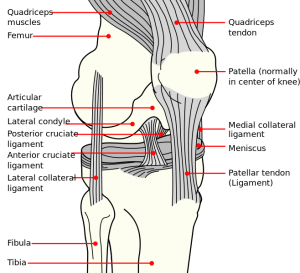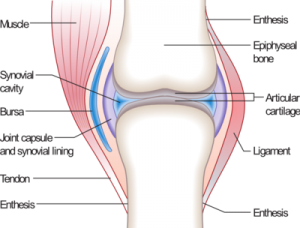I was talking with my GF that other day and she again express how she wished that she could be at least 4 inches taller since that would make it easier for her to kiss me. At 1.61 meters tall, she is a little less than 5′ 3 1/2″ tall, which I think is actually supposed to be quite average for a young Korean woman these days. The Wikipedia article on average human height by country states that for measured females at the age of 17-18 based on the 2011 Census the value for average height of Korean females is 1.6111 m (5 ft 3 1⁄2 in). So it seems her desires to be taller may not be due to aesthetic reasons, but very much utilitarian. The whole process is sort of putting a strain on her neck, and she finds it most comfortable that we almost see eye to eye when we both step on an escalator and she gets on the higher step.
I still have not shown her this website but I do think about these things. I am left to wonder just how her adult height was the result of the type of lifestyle choices she made in earlier life. After knowing her for almost a year now, I am aware that she has some habits which would have stunted her growth.
- She eats very little.
- She prefers to not enough meat
- She can go days, even weeks with eating only rice and vegetables, which would not have any protein value.
- She seems to hate drinking milk, although she seems to enjoy cheese
The energy from carbohydrates converts into glucose when broken down. It also gets converted into glycogen when you have too much glucose which gets stored in the liver and fat. When you need a extra energy to perform a strenuous task, a 3rd compound called glucagon gets activated which converts the glycogen back into glucose. In part of this process where the simple carbohydrates is involved does the stimulation of anabolic, growth promotion process get stimulated. This suggests to me that a diet that is full of high protein should be good for better growth rates when a person is in their younger days. These sugars are short term energy boost, and the human body needs proteins to build tissues. With only sugars, it becomes rather easy to use up all of the energy provided by both the glucose and glycogen. Runners have this happen to them during long runs in a phenomena known as “Hitting the Wall”
So from the perspective on her dietary choices, she was probably going to end up shorter than average, since she is just not consuming enough of the right types of foods to allow for anabolic process to occur.
- She also suffered from some severe psychological issue when she was younger, going through a few bouts of depression. (nothing too serious)
- Being raise in a difficult environment which was definitely not healthy mentally or emotionally for a child.
So it could be that her below average in stature is from multiple situations in her early life like the choosing to not go for the foods that promote growth, the occurrence of high stress level situations, bouts of depression might have all contributed to her ultimate adult height.
However, it is also important to consider the issue of genetics. Her father is very small, and that might mean that her current height was always the intended height from birth. I have never met her mother but I would assume she can’t be very big either. From just looking at the two parents, I have a guess at where she should be, but I did state in a recent article that the average human can probably change/increase their final height by as much as 3-4 inches from extremely good eating habits when they are young, as evidenced by the physical body types of professional football players. So is the height one obtains really just genetics, or can things happen to us after we are born to increase or stunt our growth?
I have studied the link between human height growth and mental pathologies in children and there is some clear evidence that having a difficult childhood with dysfunctional families or surroundings can cause stunted growth, although there is a unique situation of catch up growth that happens if the child gets moved to a much more healthier family who can raise them. It seems that the body might try to compensate for the stunted growth by going into overdrive on the bone longitudinal growth.
As for myself, I have had my own stories on why my own adult height is not optimized to be the maximum height possible.
- I went through a traumatic situation during the last year of my middle school years.
- I went on diets of only juice in my middle school days. I would not eat real food
- I went on diets of only soup during my middle school years since I was in sports.
- I choose to not eat multiple times in high schools in need to save money
- I also suffered a few mental pathologies, which lead to me to choose lifestyles that were not healthy for a kid who was stilling growing.
- My earliest years involved eating very little meat or protein but only low in nutrition soups.
- I was born and raise in a rather unsanitary conditions compared to the babies born today.
- Going through multiple bouts of sever lack of sleep in my high school years.
Now, like I will always say. This is my personal story. This is my own way of trying to rationalize the idea that I never reached the real height I was supposed to be intended for, which is to be at least 3 inches taller because the conditions of my life were not perfect, but quite dysfunctional during the years of my life when I was still in the growing mode. Do I regret my un-optimized growth because of many stupid choices I made as a teenager? Most definitely, if I was to be completely honest with myself.
(Note: Most people when questioned about past decisions leading to negative outcomes and the regret behind them, might try to say that they have never regretted any decision of their life, and say that everything bad that happened was for a reason. They bring up the existence of god to justify why bad luck happened. I for one don’t believe that and think that they are just trying to lie to themselves to protect their own egos to not feel the dreaded emotion of self-doubt when they have to confront their own flaws as a human, since I don’t believe in god. I understand that I am flawed, a human, make big mistakes, and allow myself to feel regret sometimes. There are many things I wish I could change from the past, but I can’t so I live with it, bury painful past memories in the recess of the back of my mind, and hope that one day things get better.)
So I would say that in terms of what my height could be, it has been stunted as well, probably by as much as 3 inches.
However, I also have to ask whether this idea that some of the lifestyle choices we did have as children really did lead to stunted growth or not. I mean, we all have our own stories on how we did not end up being as tall as we ‘should be’ because we were raised in a bad environment and had to go through so much suffering, trials, and tribulations.
From a purely medical point of view, maybe we are supposed to be as tall as we are now, and the low amount of nutritious foods we ate as children and the amount of psychological damaging experiences we had as children has no determinant in terms of stunting our growth. Could it be that all that matters is our genes?
From an article written by a Harvard Medical School Professor entitled “Can We Predict Height?”
The observation that family members tend to be of similar stature is born out by formulas designed to predict height. One commonly quoted formula uses parental height and gender to predict adult height (in inches) as follows:
For men: (height of mother + height of father + 5)/2
For women: (height of mother + height of father – 5)/2
If you know your parents’ heights, see if this formula predicts yours well; for most people, this will accurately predict your height within 2 or 3 inches.
All of these methods can only approximate ultimate height; they cannot predict with precision. In addition, formulas and growth charts to predict height are based on large numbers of normal children and do not perform well in predicting the ultimate height of an individual child who is unusually short or tall, has been ill, or has a genetic disorder.
The doctor who teaches at HMS is sort of stating that our height doesn’t really change much, and is mostly determined by our height, by as much as 60-80% in some studies. I can agree with that, but I am sure that stunted growth happens a lot, and people are not given the best environment to grow up in, and end up smaller.
All I really wanted to write is this….
“Do you have a story from your own life to explain why you feel that you ended up much smaller than where you ‘should’ be, in terms of bad choices or environments leading to stunted growth?”
I would like to here your stories, you reasons.



